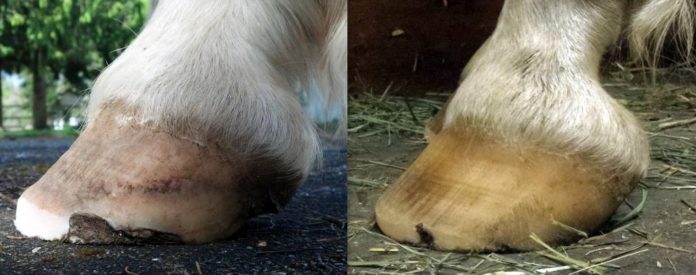When it comes to keeping our horses’ feet healthy, sometimes it can feel a bit like this, especially when things get out of balance.
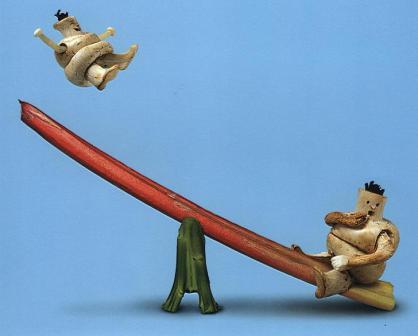
Photo credit: http://imgarcade.com/
We wish everything would fall easily into perfect balance and harmony bringing us peace and joy.

If only it were that easy. When our farrier or trimmer comes to give our horse their trim and they point out some negative changes they are seeing we might feel a bit frustrated. We can’t think of anything we have done that affected their feet. But have we? Well, no, not intentionally.
Our horses’ feet reveal much about the whole horse. Sometimes little changes make a big difference, in a positive or negative way. What is needed to keep horses feet healthy? This is the easy part as its pretty basic: diet, movement, a regular appropriate trim, and hoof protection. The hard part, however, is keeping it all in balance and avoiding the teeter-totter effect that shows up when things get out of balance.
The hardest of the four elements, yet the most important, is managing and keeping the diet balanced.
This horse has a herd of 10 other horses. He is in a huge pasture with lots of grass and has little to no stress in his life as he isn’t ridden and he is on a 6-week trim cycle. So what is out of balance? His diet. What does he eat? Year round pasture grass supplemented with grass hay, and he also has access to a red mineral block. It’s a pretty common diet for many horses and the results can be cracks, splits, white line disease, abscesses, and/or excessive thrush which can lead to feet that look like this. How do we fix it? Balance the diet. Provide a daily supplement that is balanced to his forage. Copper, zinc and selenium in the correct quantities are missing in many horses’ diets. For a horse that is getting excessive sugar and starch, especially in the spring and fall, a grazing muzzle would help keep the diet in better balance.
What happens if our horse is getting a balanced diet of good quality tested grass hay, a daily supplement balanced to their diet and we add in too much of this and at the same time life gets in the way and we stop riding or exercising them for a week or more?
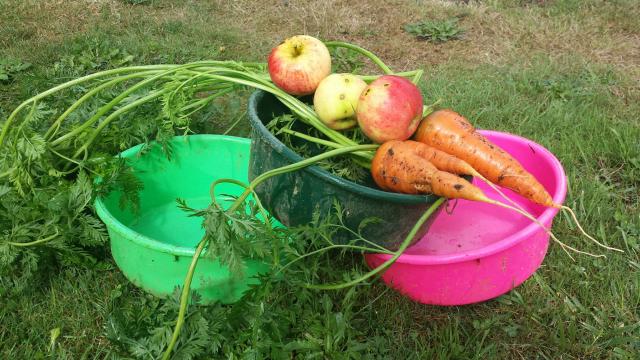
You might get some of this.
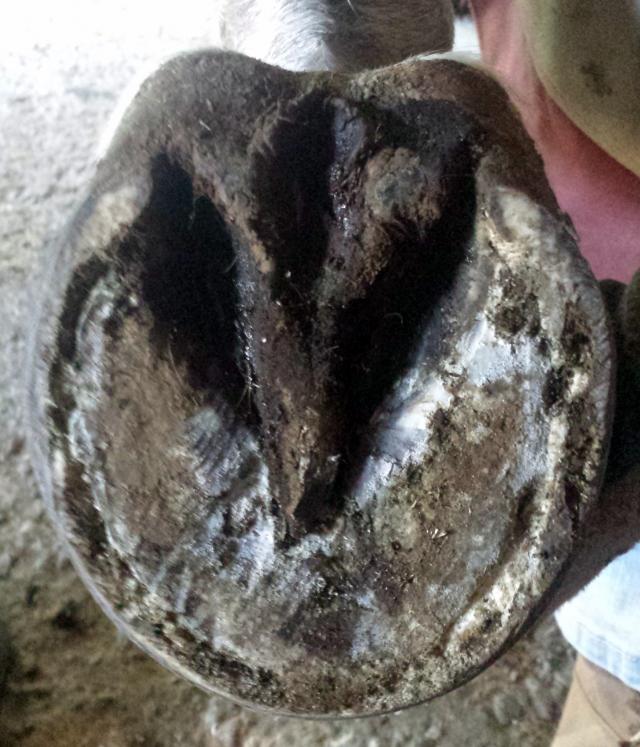
Minor hoof wall separation, sensitive frog, excessive thrush…seems pretty harmless until the horse starts getting worse and/or the horse starts to get sore walking on the rocks or even limping in their soft pasture. So what do we do now? Get the diet back in balance. Cut back on the sweet treats and increase the exercise program. If the horse is tender-footed or unwilling to walk out, apply a pair of Easyboots.
Meadows is a rescue from the kill pen. Along with her poor body condition, she also had an injury to her hoof wall. Part of her rehab to good health was a balanced diet, rehab trimming and hoof protection. She is wearing the Easyboot Glove. Not only does a balanced diet grow a healthy foot, it also provides whole horse health. Meadow is an example of a horse on a balanced diet, lots of exercise and a good trim protocol.

What is the benefit of keeping it all in balance? Some of this.
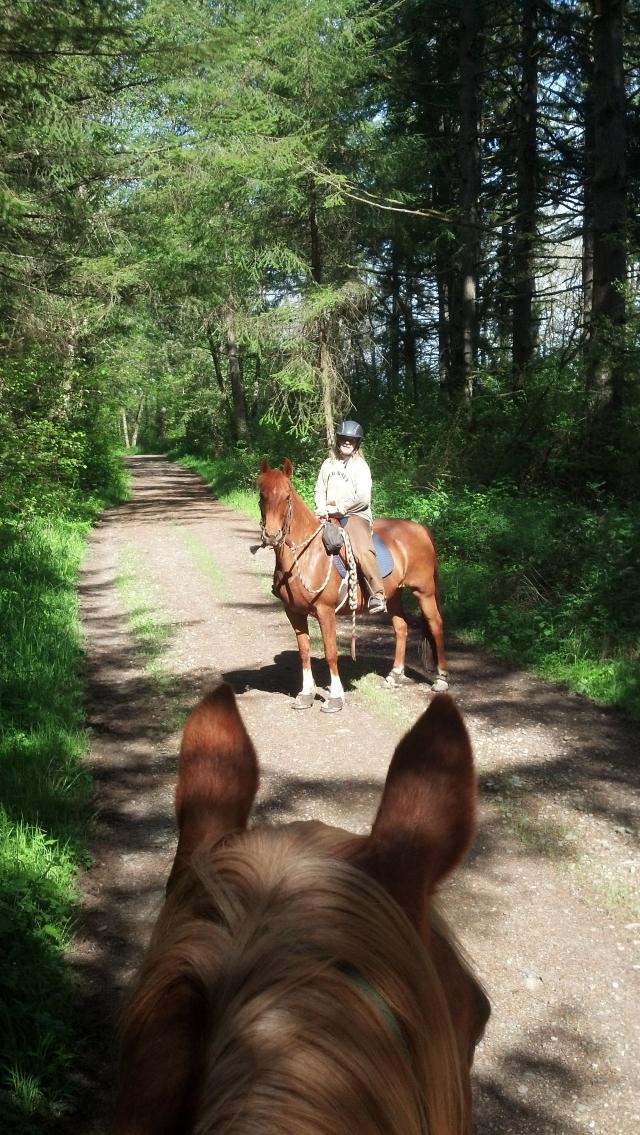
Getting out and enjoying the beautiful trails with a good friend and some good horses. The horse in the photo is an easy keeper, she is wearing Easyboot Glove Back Country on her fronts, and the Easyboot Glove on the backs.
Stay off the teeter-totter by keeping things in balance. A balanced diet, plenty of movement, balanced trimming and hoof protection and you too can achieve perfect balance.
Amy Allen Horsemanship


